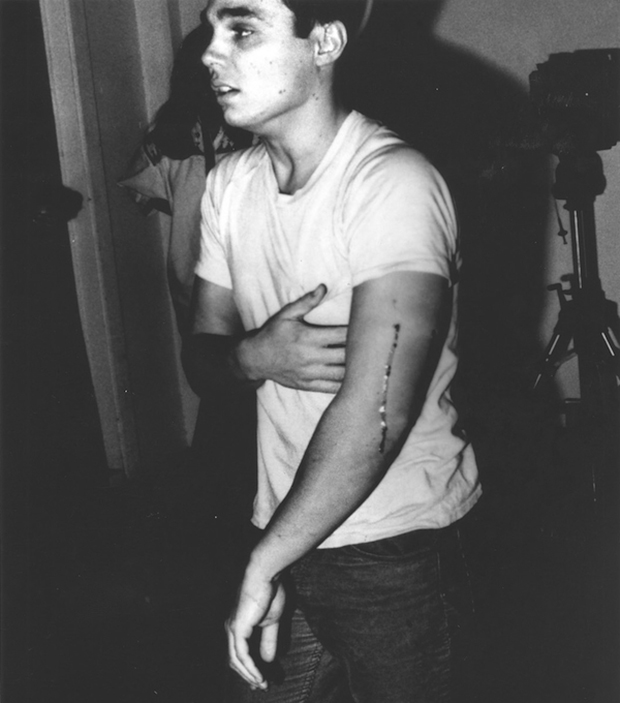
How a horrific childhood accident led Chris Burden to employ extreme personal danger in his artworks
On the evening of November 19, 1971, Chris Burden sustained a gunshot wound and checked himself into a Los Angeles hospital. The injury was fairly minor; a bullet, discharged by a friend from a 0.22 caliber rifle at the F-Space gallery in Santa Ana, Southern California, had grazed his upper left arm.
However, Burden, when asked to file a police report, did not explain that the gun was fired as part of a performance-art piece, Shoot, but instead told the authorities that it had been an “accident”.
Burden, who was born on this day, 11 April, in 1946, may have mislead the police on that occasion. However, some believe a childhood accident, that occurred roughly thirteen years earlier, may have spurred him on to create the kind of works where extreme bodily risk was presented as important performance art.
In 1958, at the age of 12, Burden was injured in a motor-scooter accident on the Italian island of Elba. His left foot was so badly damaged that doctors had to perform immediate emergency surgery before they could administer anaesthetic.
Burden described this medical procedure as “formative” in an interview with The New Yorker a few years before his death in 2015. During his convalescence he became interested in art. Although he found photography diverting, he began his career creating little seen, extreme works, which pushed performance art towards the brink of mortality.
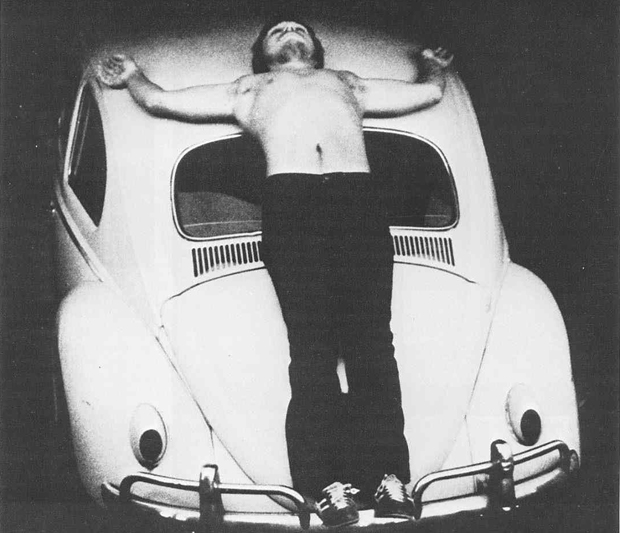
Burden’s Five Day Locker Piece, wherein he was locked in one his university’s lockers for five days, was staged for his masters’ thesis, at UC Irvine, in 1971. The following year, in 1972, he created his Dead Man performance, lying under a tarpaulin beside a parked car on LA’s busy La Cienega Boulevard, perilously close to passing cars, his unseen body marked by only two emergency flares. The police eventually halted the performance and arrested Burden.
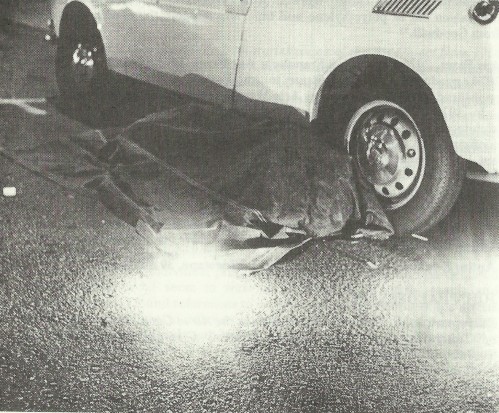
In 1973, he crawled, semi-naked, over a parking lot strewn with broken glass for his Through the Night Softly piece. That same year, he had his assistants place two sheets of glass on either arm, pour petrol over each sheet, and light them, in a performance he called Icarus.
In April 1974, Burden was nailed to a blue Volkswagen Beetle for Trans-Fixed, a custom-car-culture crucifixion and in June 1974, he arranged for himself to be kicked down a flight of stairs at Art Basel in Switzerland, in a work entitled Kunst Kick.
The following year, at Chicago’s Museum of Contemporary Art, he reclined under a glass sheet for his Doomed performance piece, vowing to remain motionless until an onlooker intervened. The performance lasted a little over 45 hours, before a gallery employee decided to leave a glass of water beside Burden’s prone body, which he drank than smashed a clock above him bringing the work to a close.
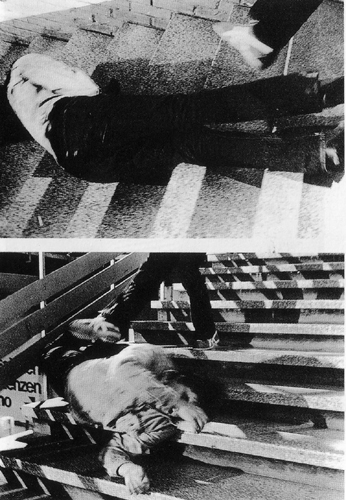
While Burden later admitted he would “probably not” have remained in that Chicago gallery until he died, he was no simple stuntman or self-harmer. In 2007 he said he staged works like Shoot, because he “wanted to be taken seriously as an artist.”
Burden stretched that seriousness to absurd degrees, telling an interviewer in 1978 that “I often think of myself as sort of training for some sort of – you know, outer-space programme. I mean, I feel like, in some way, I have done the same things.”
In 1988, he expressed a similar sentiment, saying the performances afforded him “knowledge that other people don’t have, a kind of wisdom.”
Whatever serious lessons these performances offered, they were all learnt by Burden before the end of the 1970s, when his artistic practice changed, as he turned away from his body and towards more impersonal sculptures and installations.
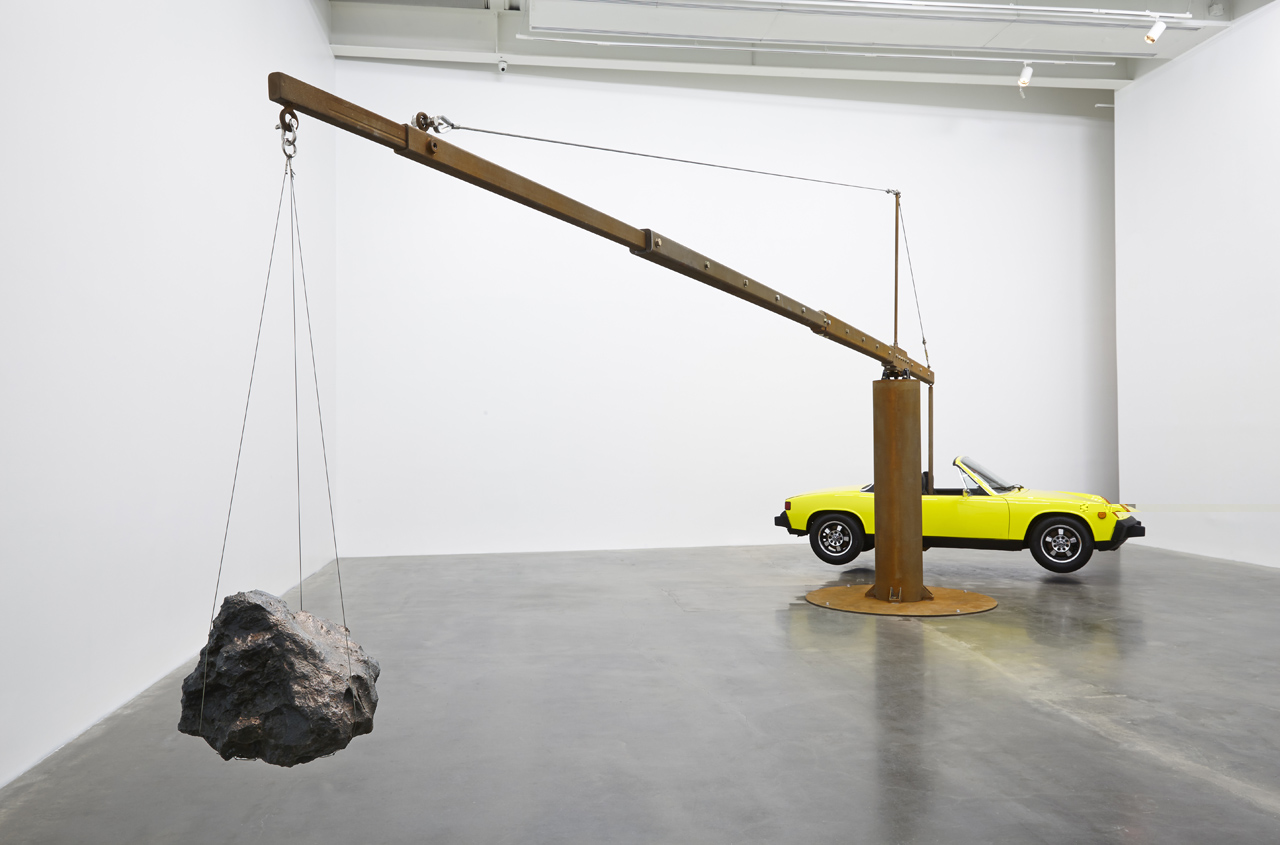
Today, while his later works, such as his mechanical assemblage, Porsche with Meteorite, are the most widely displayed works by the artist, it is his earlier, little seen performances that afford him a place in art history. And perhaps an even earlier, involuntary painful episode pushed him towards these in the first place.
And if you want to know more about the beautiful, provocative and occasionally perverse ways in which artists have represented, scrutinized and utilized the body over centuries order a copy of Body of Art here.